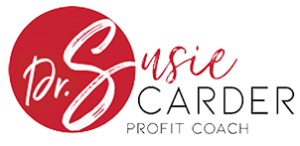Get Noticed, Get Paid!
Are you a best-kept secret? It’s time for you and your business to stop sliding under the radar. You can start getting massive growth for your database and your social media. It’s time for you to get noticed and get paid!
You need to establish a public relations (PR) strategy. I know it sounds scary, but you can do it all by yourself. That’s how I started. You don’t need to hire a PR agency.
Here are some of my top strategies for how I got noticed in trade magazines and larger publications. You can do all of these without hiring anyone!
First, Treat Your PR Strategy Like A Newsroom
You need to outline content for an entire year. It sounds intimidating, but you need to do it to start seeing results. Keep in mind that a PR strategy doesn’t just happen. Maybe you’ve heard of someone who created a product or service and the media suddenly came knocking with interest. That may have happened to somebody once, but it’s extremely rare.
You should never expect reporters to come and find you. The reality is they’re very busy. They are constantly having to meet deadlines and gather information for their stories. It will be your job to reach out so they can find your story in a timely manner.
Make sure your story is relevant to the reporter’s target audience. Don’t focus your time and energy trying to convince a reporter to publish a story that won’t appeal to their audience. Treating your PR strategy like a newsroom will make the reporter’s job much easier!
Then, Build A Calendar
Next, create an editorial calendar filled with twelve topics you want to talk about in the next year—one for every month. Some of these topics can be relevant to a particular time of year. Maybe in January, write something about starting the New Year off on the right foot. In April, you might write something about taxes. Maybe in June, you’re moving into a new office. Write about that.
Get creative. Come up with ideas for evergreen stories. These are stories that aren’t timely and can fill the empty months. Your editorial calendar should serve as your guide for blog posts and press pitches you want to write throughout the year.
If you need help creating content, do a little research. Every month represents at least one thing—there’s a national potato month and even national frog month! As you’re coming up with content, remember that newsrooms are brutal. If a story isn’t timely, it will be thrown out. And if it’s overdone, no one is going to write about it.
Evaluate Audience Demographics
Evaluate which topics are newsworthy and which one relates to what demographics. What stories would be interesting to the audience and to the press? It’s okay if not all the topics are worthy of a press pitch. Just be upfront about what your pitch is. If it doesn’t get taken, you can turn it into a blog or a newsletter at a later time.
Think to yourself: is it timely? Does your pitch have a unique perspective? The headline needs to immediately grab your attention. The content should align with the industry’s and also with your business’s values. For each topic, you want it to be deemed worthy of media attention.
Dedicate Time to your PR strategy
Now you need to put your plan into practice. Remember, you can do it yourself—no need to hire an agency. Dedicate specific time in your schedule to your PR plan or it will never get done. Take an afternoon every week to work on PR strategy. If you find that you don’t have that kind of time, then maybe it’s time to hire someone else. You can work with an agency or even an intern. They can achieve your desired result in less time because they are used to working on PR day in and day out.
Find Industry Publications
Create a focus for your niche. Is there a niche industry? What publication will be interested in taking your pitch? What morning show or TV program that would want to hear more? Decide who you’re pitching to and who their audience is. Use this decision to create a targeted and effective pitch.
What trade magazines are available for your industry? Back when I was working in the beauty industry, we only had four trade magazines for the industry. PR strategies were easy for me. Every month, I went to all four trade magazines trying to get published. It’s not as easy anymore because there are so many options.
Create a HARO Account
One simple way to know who might be interested in your pitch is by signing up for a free account through Help a Reporter Out (HARO). Go to helpareporter.com. Once you’ve created an account, you’ll start getting emails three times a day. Divide these into categories: business, finance, and lifestyle. Keep your eye out for requests that are relevant to you and check it out to see if it aligns with your business strategy.
When you find relevant requests, respond quickly with one or two sentences. Include a quote or topic and your willingness to follow up if needed. Sometimes journalists will simply copy and paste your quotes into their articles. Other times they will want to follow up.
I get published 20% of the time I reach out with my HARO subscriptions. With well-known publications, such as Forbes, that rate can be lower. Set up a Google alert to track your publications. Many reporters will let you know if they included you, although others won’t have the time.
I know this all sounds like a lot, but it is possible!
Get the word out and let your name be known. But most importantly, get paid! I look forward to supporting you and hearing about your publications.
Your Partner in Prosperity,






